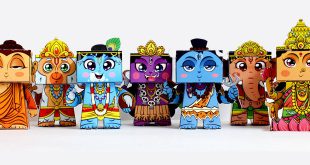आँख के आंसू मैं देखो अब खडा मैं बह रहा हूँ।
और अत्त्याचार मुझसे देश मैं देखे न जाएं–
आज शिव सा ही गरल मैं पान करके कह रहा हूँ॥
भावना बैठी कहाँ है आप भी मन को कुरेदो।
आप के बस का ना हो तो, देश किन्नरों को दे दो॥
नारियों की रक्षा के विश्वास अब तो घट रहे हैं,
दूध पीते बालकों के सर यहाँ पर कट रहे हैं।
सीना ताने हम खड़े हैं और पौरुष मौन सारा–
आज धर्म के सहारे लोग देखो बंट रहे हैं॥
है कहाँ ऐसा मसीहा फिर से सूली पर चदे जो।
आप के बस का न हो तो, देश किन्नरों को दे दो॥
जल रहे कश्मीर की बस्तियां बतला रही हैं,
मौत की काली घटायें आज भी मंडरा रही हैं।
लाल है सिंदूर से बढ़ कर सुनो कश्मीर घाटी–
रोटियों पर वार करती बोटियाँ बल खा रही हैं॥
आप मानव की आज़ादी का नया हल भी सहेजो।
आप के बस का न हो तो, देश किन्नरों को दे दो॥
देख लो आतंकवादी सर हमारे काटते हैं,
खून अपनों का बहाकर, रोज़ ही वह चाटते हैं।
आप बोलो, आपने भी, कब कहाँ अंकुश लगाया–
उग्रवादी रोज़ खाई, लाशों से अब पाटते हैं॥
तोड़ दो वह हाथ, अपनों पर अगर फिर से उठे जो।
आप के बस का न हो तो, देश किन्नरों को दे दो॥
दे यदि किन्नरों को सत्ता, देश यह फूले फलेगा,
आतंकवादी ढूंढने से, फिर न भारत में मिलेगा।
टेकते घुटने रहेंगे, देश के दुश्मन ही सारे–
तालियों की ताल पर जब, राज किन्नरों का चलेगा॥
भारत में घुसपैठ ‘रत्नम’ किसकी फिर हिम्मत करे जो।
आप के बस का न हो तो, देश किन्नरों को दे दो॥
∼ मनोहर लाल ‘रत्नम’
Learn More about “Eunuchs”
In the culture of the Indian subcontinent, a hijra is usually considered a member of “the third gender” neither man nor woman. Most are physically male or intersex, but some are female. Hijras usually refer to themselves linguistically as female, and usually dress as women.
Although they are usually referred to in English as “eunuchs”, relatively few have any genital modifications.
The Hindi word “hijra” may alternately be romanised as hijira, hijda, hijada, hijara, hijrah and is pronounced [हिजड़ा], between “heejra” and “heejda”. An older name for hijras is kinnar, which is used by some hijra groups as a more respectable and formal term. An abusive slang for hijra in Hindi is chhakka.
In Bangla “hijra” is called hijra, hijla, hijre.
A number of terms across the culturally and linguistically diverse Indian subcontinent represent similar sex / gender categories. While these are rough synonyms, they may be better understood as separate identities due to regional cultural differences. In Tamil Nadu the equivalent term is aravanni, aravani, or aruvani. In Urdu and Punjabi, both in Pakistan and India, the term khusra is used. Other terms include jankha. In Gujarati they are called Pavaiyaa.
In South India, the goddess Yellamma is believed to have the power to change one’s sex. Male devotees in female clothing are known as Jogappa. They perform similar roles to hijra, such as dancing and singing at birth ceremonies and weddings.
The word kothi (or koti) is common across India, although kothis are often distinguished from hijras. Kothis are regarded as feminine men or boys who take a feminine role in sex with men, but do not live in the kind of intentional communities that hijras usually live in. Local equivalents include Durani (Kolkata), menaka (Cochin), Meti (Nepal), and Zenana (Pakistan).
Hijras are widely referred to in English with the term “eunuch” , although LGBT historians or human rights activists might label them as being transgender.
 Kids Portal For Parents India Kids Network
Kids Portal For Parents India Kids Network






